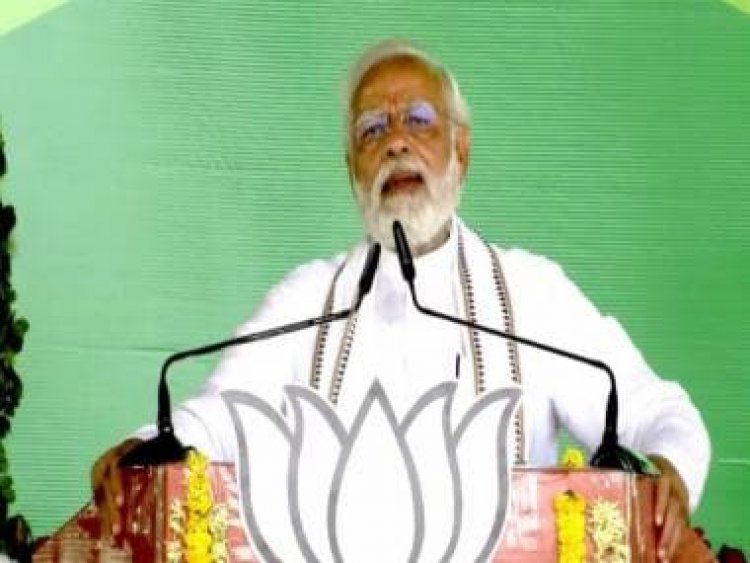The first sightings of an organiser: How Modi surprised Advani with his organisational skills
The first sightings of an organiser: How Modi surprised Advani with his organisational skills

The choice of the venue for beginning the yatra put a considerable strain on the ruling alliance. But once again, the BJP decided to stick to its ideological line irrespective of its potential impact on the coalition government. Narendra Modi was tasked to make preparations for the Gujarat leg of the yatra. Its route was planned in a way to cover the maximum number of tribal and rural areas, in order to attract those social groups that were not yet associated with the Sangh Parivar. The programmes were chalked out in a manner to get maximum leverage for the party in mobilising people’s opinion and were adequately backed by thousands of committed cadres of the entire Sangh Parivar.
On the day LK Advani was to begin the yatra, Modi returned to Veraval town near the Somnath temple after mapping the entire route of Advani’s mechanised ‘chariot’. Those associated with Modi then reveal that he would involve himself in every detail of every event in the course of the yatra, even planning alternative routes should there be any difficulty on the way. There is an interesting anecdote which reveals Modi’s attention to detail. A day before the Rath Yatra was to commence, Advani and senior party leader Pramod Mahajan reached Veraval, the major town close to the Somnath temple, and they were a bit dismayed to see no signs of the coming event — no posters and flags in the streets. According to Advani himself, the party was quite sceptical about the success of the Rath Yatra as this was the first mass mobilisation programme at the national level. Given that the township had no posters and banners for the yatra, the central leaders were doubtful if there had been adequate preparation to give a leg up to the yatra at its beginning.
When the yatra began the next morning, however, it got a rousing reception, with crowds thronging the way. Modi’s team had spread the word effectively after all. These people came from different social segments, including OBC, SC and tribals. In a sense, the BJP had, for the first time, reached out to those sections of society which were beyond the Sangh Parivar’s circle of influence.
The overwhelming response to the Gujarat leg of the yatra was as much a surprise for Advani, Mahajan and other leaders as it was for the media persons covering the event. Mahajan was quite alarmed as he had to lead the yatra’s next leg through his own state, and now the bar had been set high. ‘Don’t expect this kind of response in Maharashtra,’ he told Advani.
Mahajan argued that the yatra could evoke such a tremendous response all over Gujarat because of the state’s peculiar social character, steeped in deep religiosity. What he seemed to have missed initially was the building up of an effective organisational network which had been acting like a well-oiled machine.
There is no denying the fact that the Gujarat leg of the Rath Yatra had set the pace for the rest of India. At the same time, Gujarat managed to reap maximum political benefit from the exercise, which subsumed caste leavages and coalesced Hindu society in one identity for the first time. Significantly, the Sangh Parivar’s organisational network was at the vanguard of this social cohesion, which subsequently turned into a great political advantage. The state found political novelty in these new idioms and culture, offering a different politics and seamlessly aligned with the dominant religious ethos of society.
There was the possibility that once the yatra crossed the state border, the exuberance it generated would die down. But the party’s organisational follow-up did not let this happen. The BJP’s state unit continued its programmes of mobilising the cadres and support base at the local level to cement its new-found wider social acceptance. This laid a solid foundation for the party’s organisational structure, making it an invincible political force.
The author is a journalist with 35 years of experience. Currently, he is the press secretary to the President of India. The article is an edited excerpt from Ajay Singh’s book, ‘The Architect of the New BJP: How Narendra Modi Transformed the Party’, published by Penguin. The views expressed in this article are those of the author and do not represent the stand of this publication.
Read all the Latest News, Trending News, Cricket News, Bollywood News,
India News and Entertainment News here. Follow us on Facebook, Twitter and Instagram.
What's Your Reaction?



























































